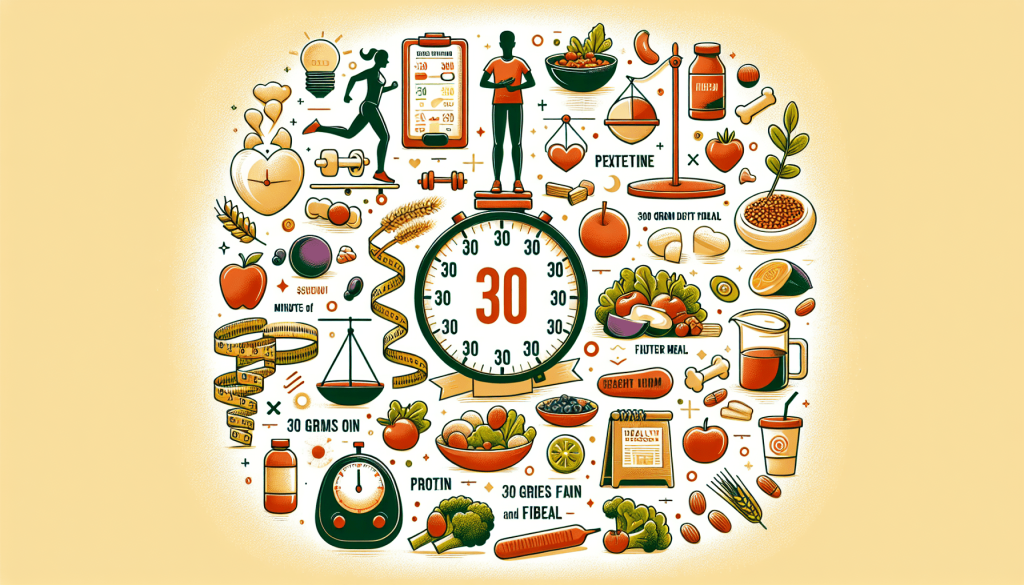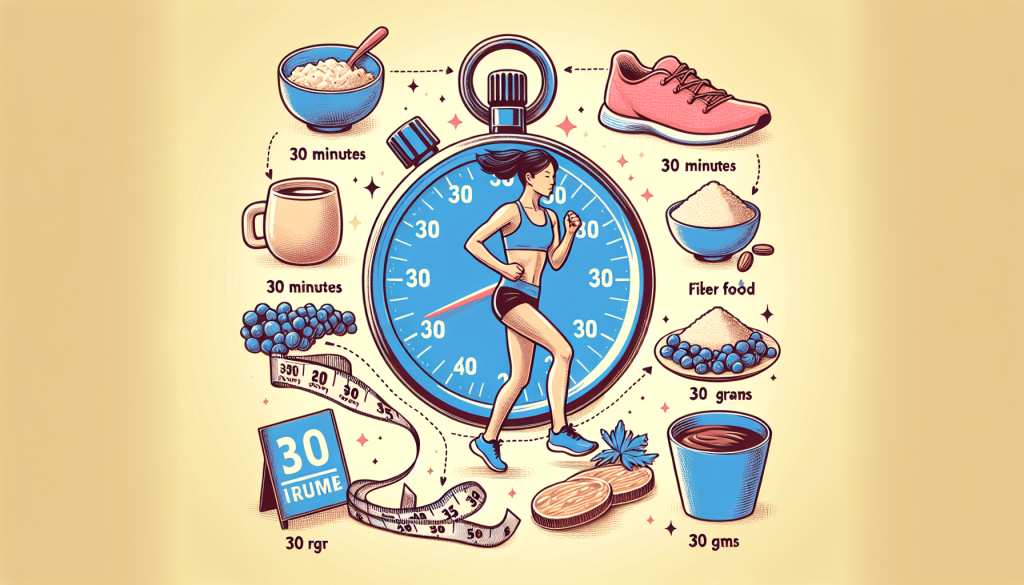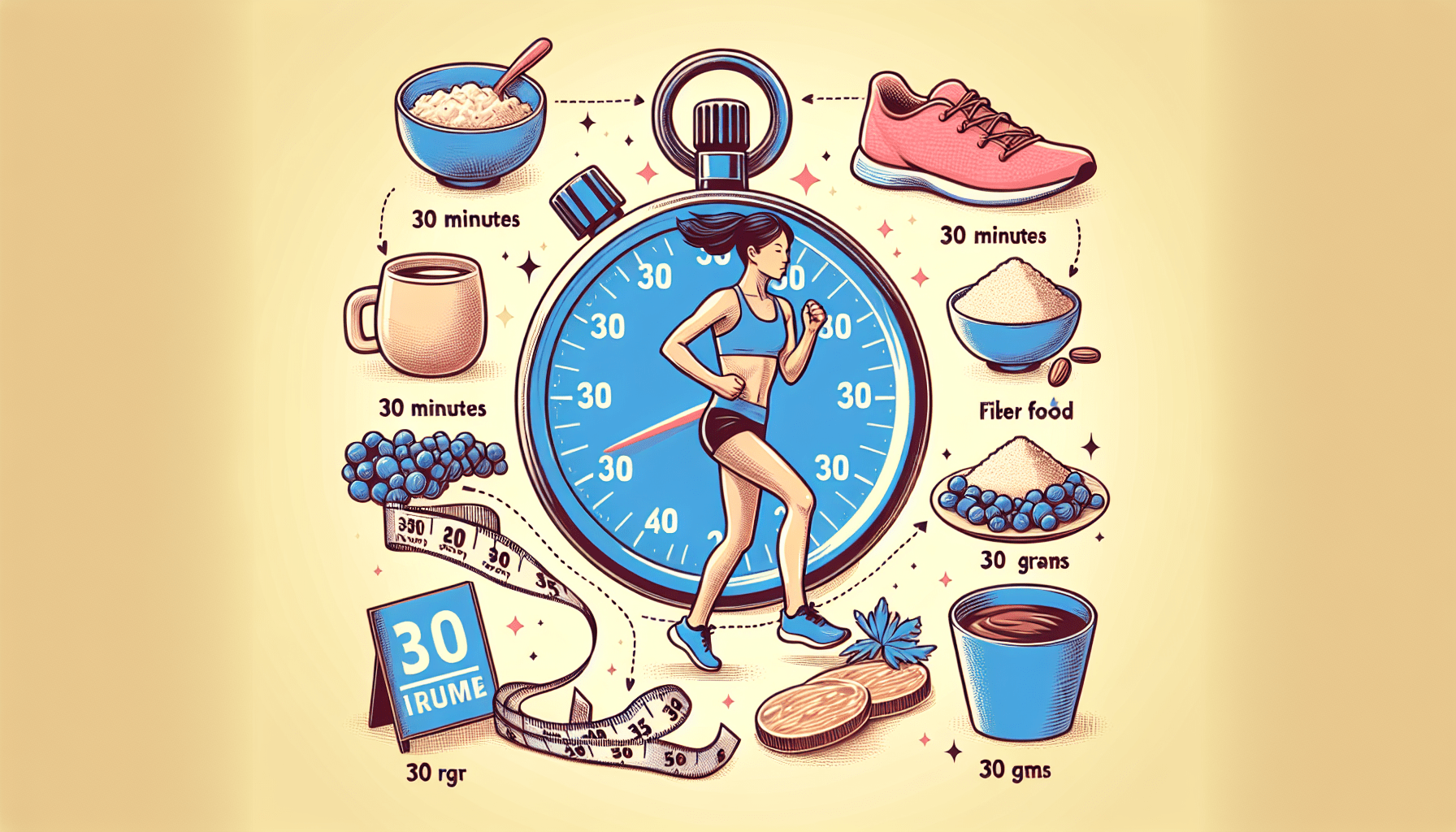What Is The 30 30 30 Rule For Weight Loss?
Are you struggling to shed those extra pounds and looking for a simple yet effective rule to follow? Well, look no further, because the 30 30 30 rule for weight loss might just be what you need. This rule, which has gained popularity in the fitness community, involves dedicating 30 minutes to each of the three essential components of a healthy weight loss journey – exercise, meal planning, and relaxation. By incorporating this rule into your daily routine, you can achieve your weight loss goals in a balanced and sustainable way. Let’s explore how this rule works and how you can make it a part of your lifestyle.

Overview
Definition of the 30 30 30 Rule
The 30 30 30 rule for weight loss is a dietary approach that emphasizes the balance of caloric intake, meal frequency and timing, and food composition. It is based on the principle that by following this rule, you can create a balanced, sustainable eating plan that promotes weight loss and overall health.
Background and Purpose
The 30 30 30 rule was developed with the intention of providing a simple and effective framework for individuals to achieve their weight loss goals. It takes into consideration the importance of calorie intake, meal frequency, and food composition, which are all key factors in determining weight loss success. By understanding and implementing these principles, you can create a healthier relationship with food and achieve sustainable weight loss.
How Does the 30 30 30 Rule Work?
Caloric Intake and Distribution
With the 30 30 30 rule, you are encouraged to consume a specific percentage of your daily calorie intake at each meal. This rule suggests allocating 30% of your daily caloric needs to each meal – breakfast, lunch, and dinner. By evenly distributing your calories throughout the day, you can maintain steady energy levels, prevent overeating, and support weight loss.
Meal Frequency and Timing
In addition to distributing your calories evenly, the 30 30 30 rule emphasizes the importance of meal frequency and timing. It suggests having three main meals per day, spaced roughly four to five hours apart. This approach ensures that you are providing your body with a consistent source of energy while also allowing for proper digestion and nutrient absorption.
Food Composition
Another vital aspect of the 30 30 30 rule is the consideration of food composition. It encourages you to focus on including a variety of nutrient-dense foods in your meals, such as whole grains, lean proteins, fruits, vegetables, and healthy fats. This ensures that you are getting a balanced mix of macronutrients, vitamins, and minerals, which is essential for overall health and weight management.
Benefits of the 30 30 30 Rule
Balanced and Sustainable Approach
One of the key benefits of the 30 30 30 rule is that it promotes a balanced and sustainable approach to weight loss. By evenly distributing your calories and focusing on nutrient-dense foods, you can create a healthy and enjoyable eating plan that is not overly restrictive or depriving. This makes it easier to stick to your weight loss goals in the long term.
Improved Blood Sugar Control
Following the 30 30 30 rule can also lead to improved blood sugar control. By having regular, balanced meals throughout the day, you can prevent drastic fluctuations in your blood sugar levels. This can help reduce cravings, improve energy levels, and promote overall metabolic health.
Increased Satiety and Fullness
Another advantage of the 30 30 30 rule is the increased satiety and fullness it provides. By having balanced meals that include protein, fiber, and healthy fats, you are more likely to feel satisfied and avoid unnecessary snacking or overeating. This can help control portion sizes and contribute to weight loss success.
Guidelines for Implementing the 30 30 30 Rule
Calculating Daily Caloric Needs
To implement the 30 30 30 rule effectively, it is essential to calculate your daily caloric needs. This can be done by considering factors such as age, gender, height, weight, and activity level. Many online calculators can help you determine your approximate caloric needs. Once you have this information, you can divide it into three equal parts to determine the target number of calories for each meal.
Determining Macronutrient Ratios
In addition to overall calorie distribution, it is also important to determine the macronutrient ratios for each meal. While individual needs may vary, a general guideline is to aim for a balanced mix of carbohydrates, proteins, and fats. The exact percentages can be adjusted based on personal preferences, dietary restrictions, and weight loss goals.
Creating Balanced Meals
When planning your meals, aim to include a variety of nutrient-dense foods from each food group. Incorporate whole grains, lean proteins, healthy fats, and plenty of fruits and vegetables. Be mindful of portion sizes and opt for cooking methods that minimize the use of added fats and sugars. Ensuring a balance of nutrients in each meal can contribute to overall health and weight loss.
Designing an Eating Schedule
To follow the 30 30 30 rule, it is important to establish an eating schedule that aligns with your daily routine. Plan and prepare your meals ahead of time to ensure you have balanced options available. Aim to eat your meals roughly four to five hours apart, allowing enough time for digestion and hunger cues to regulate. Consistency is key in maintaining results.

Sample Meal Plan Using the 30 30 30 Rule
Breakfast
- One whole wheat toast with avocado and a poached egg
- A side of mixed berries
- A cup of black coffee or herbal tea
Lunch
- Grilled chicken breast with a side of roasted vegetables
- A small portion of quinoa or brown rice
- A mixed green salad with olive oil and lemon dressing
Dinner
- Baked salmon with steamed broccoli and quinoa
- A side of sautéed spinach with garlic
- A light dessert of Greek yogurt with honey and berries
Snacks
- A handful of mixed nuts or seeds
- A piece of fruit
- Raw vegetables with hummus
Beverages
- Water throughout the day
- Herbal tea or unsweetened iced tea
Tips and Considerations for Success
Personalization and Individual Variation
While the 30 30 30 rule provides a general guideline, it is important to personalize it to suit your individual needs and preferences. Make adjustments based on dietary restrictions, cultural preferences, and personal taste. This will ensure long-term adherence and enjoyment.
Gradual and Sustainable Changes
When adopting the 30 30 30 rule or any weight loss approach, it is important to make gradual and sustainable changes. Instead of completely overhauling your eating habits overnight, start by implementing small changes and gradually build on them. This will make the transition easier and increase the likelihood of long-term success.
Physical Activity and Exercise
To make the most of the 30 30 30 rule and maximize weight loss, incorporating regular physical activity is highly recommended. Engage in activities you enjoy, such as walking, cycling, or dancing, for at least 150 minutes per week. Combined with the balanced eating plan, regular exercise can enhance weight loss results and improve overall health.
Challenges & How to Overcome Them
Social Situations and Dining Out
When faced with social situations or dining out, it may be challenging to adhere strictly to the 30 30 30 rule. However, by making mindful choices and practicing portion control, you can still enjoy these occasions while staying on track. Opt for healthier options, share dishes, and listen to your body’s hunger and fullness cues.
Cravings and Emotional Eating
Cravings and emotional eating can pose challenges when trying to adhere to a weight loss plan. When faced with cravings, allow yourself the occasional indulgence in moderation. Focus on finding healthier alternatives to satisfy your cravings and address emotional eating triggers through self-reflection, stress management techniques, and seeking support when needed.
Plateauing Weight Loss
At times, weight loss progress may plateau despite following the 30 30 30 rule. When this happens, it is essential to assess other variables that may be affecting your weight loss journey. Consider factors such as stress levels, sleep quality, and overall lifestyle choices. Adjustments in these areas, in combination with continued adherence to the 30 30 30 rule, can help overcome weight loss plateaus.
Possible Risks and Precautions
Dietary Restriction and Nutrient Deficiencies
While the 30 30 30 rule promotes a balanced approach to weight loss, it is important to ensure that you are still meeting your nutritional needs. Pay attention to your body’s cues and if needed, consider consulting with a healthcare professional or registered dietitian to ensure your diet is providing all the necessary nutrients.
Monitoring and Consulting a Healthcare Professional
If you have any underlying health conditions or are taking medications, it is always advisable to consult with a healthcare professional before embarking on any weight loss plan. They can help assess your individual needs, provide personalized recommendations, and monitor your progress.
Conclusion
The 30 30 30 rule for weight loss offers a balanced and sustainable approach to achieving your weight loss goals. By evenly distributing your calorie intake, focusing on nutrient-dense foods, and following a regular eating schedule, you can create a healthy and enjoyable eating plan that supports weight loss. Remember to personalize the rule to suit your needs, make gradual changes, and incorporate regular physical activity for optimal results. Embrace this balanced approach to weight loss and pave the way for long-term success and overall health.
Additional Resources

After 12 years of intense research on over 24,000 patients in his weight loss clinic from Burke, VA… A renowned Board-Certified Doctor has revealed how regenerating one of your body’s organs can lead to a huge 35Ibs weight loss in just 12 weeks.
It takes only 2 minutes to regenerate this organ and you’ll turn your body into a fat-melting furnace.
Can you guess which organ you must regenerate in order to reach your ideal weight in record time?
Is it your…
a) Liver
b) Brain
c) Stomach
d) Thyroid or
e) Your Kidneys?
Tap on your answer above or go to this page to see why it can actually melt 35Ibs in just 12 weeks!







